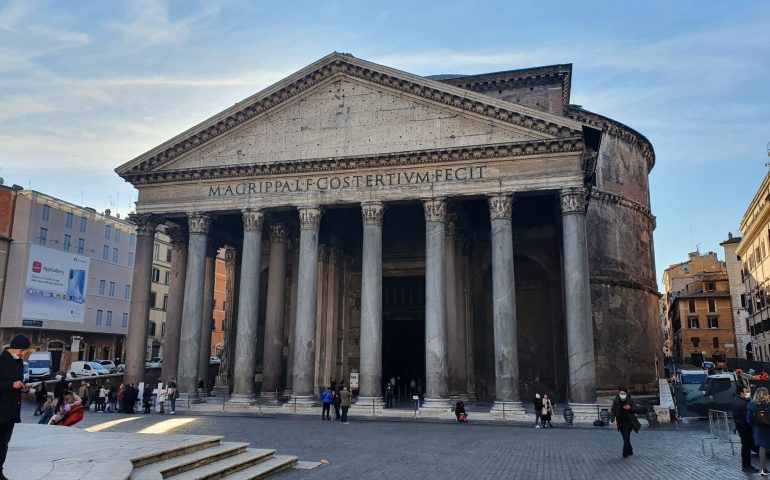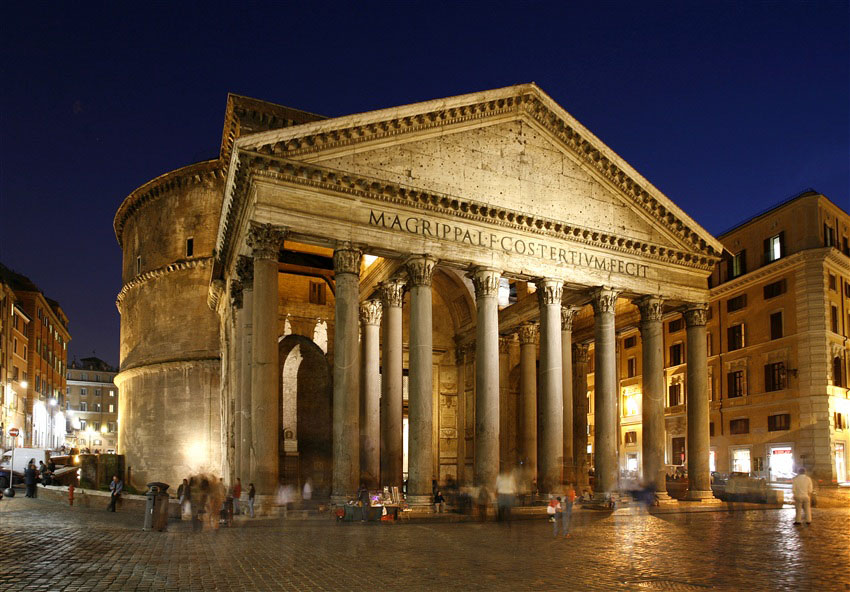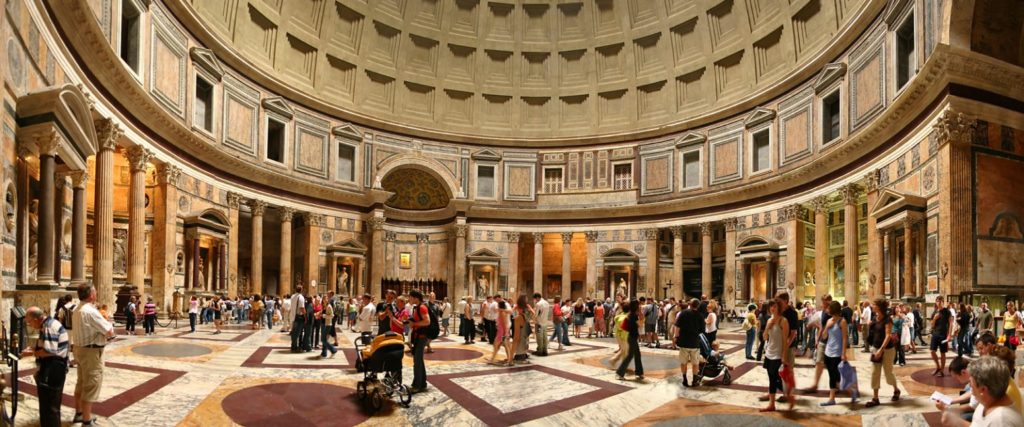The Pantheon has been a Christian church for more than 1400 years
During the Early Middle Ages the Pantheon was transformed from a pagan temple to a Christian church. In 608 Pope Boniface IV had the remains of some martyrs found in the Christian catacombs moved to the Pantheon, a marvelous Roman monument. From a pagan temple it became a Christian church devoted to Santa Maria and the Martyrs. All this allowed the structure to survive almost intact to the looting inflicted by the popes on the buildings of classical Rome

Suddenly, in the streets of central Rome, you will find yourself in front of one of the most beautiful and grandiose monuments ever built by man. An imposing, spectacular structure, the most visited Italian site in 2019: the Pantheon will turn two thousand years in 2027, an extraordinary building, built in the imperial era, which has been perfectly preserved and is one of the most admired symbols of the capital.

The Pantheon, located in the Pigna district, in the historic center, is a building of ancient Rome built as a temple dedicated to all past, present and future divinities. It was founded in 27 BC. by Marco Vipsanio Agrippa, son-in-law of Augustus. It was rebuilt by the emperor Hadrian between 120 and 124 AD, after the fires of 80 and 110 AD. they had damaged the previous construction of the Augustan age.

It is composed of a circular structure joined to a portico in Corinthian columns (eight at the front and two groups of four in the second and third row) that support a pediment. The large circular cell, known as the rotunda, is surrounded by thick masonry walls and eight large pillars on which the weight of the characteristic hemispherical dome in concrete is distributed, which houses at its apex a circular opening called oculus, which allows the illumination of the internal environment.
The height of the building calculated at the oculus is equal to the diameter of the rotunda, a feature that reflects the classic criteria of balanced and harmonious architecture. Almost two millennia after its construction, the intrados dome of the Pantheon is still today one of the largest domes in the world, and specifically the largest built in Roman concrete.

At the beginning of the seventh century the Pantheon was converted into a Christian basilica called Santa Maria della Rotonda or Santa Maria ad Martyres, which allowed it to survive almost intact the looting inflicted by the popes on the buildings of classical Rome. It enjoys the rank of minor basilica and is the only basilica in Rome other than the patriarchal ones to still have a chapter. The inhabitants of Rome popularly called it la Rotonna (“la Rotonda”), from which the name of the square and the street in front of it also derive.
State property of the Italian State, since December 2014 the Ministry for Cultural Heritage and Activities has managed it through the Lazio museum complex, and since December 2019 through the State Museums Direction of Rome. In 2019 it registered 8,955,569 visitors, making it the most visited Italian state museum site.
It is not visible to the naked eye, but the entire structure of the Pantheon is a perfect sphere. The measure of its height is in fact equal to that of the diameter. Externally it looks “bare” because the gilded bronze that covered the dome was removed in 655 by the Eastern Emperor Constant II. The only remains of the original bronze are found on the oculus and on the frame of the monument
The Pantheon is the best preserved Roman monument that has come down to us, it has always amazed everyone for its spectacularity. The plays of light that are created inside are still being studied. When Stendhal saw it for the first time, he spoke of it as “The most beautiful remnant of Roman antiquity. A temple that has suffered so little that it appears to us as the Romans must have seen in their time ”.
BOOK YOUR SHORE EXCURSION FROM CIVITAVECCHIA TO ROME
